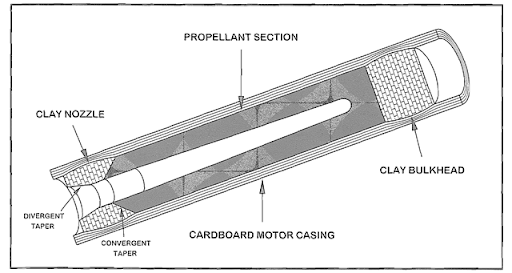- Joined
- Mar 5, 2017
- Messages
- 1,918
- Reaction score
- 807
Anyone know what thickness balsa was used for the fuselage of the old Enerjet Pterodactyl? I'm trying to clone one and the plans don't specify. Thanks for any info you can provide.










Hi, Eric !
I believe the fuselage is 3/8" hard balsa . . .
www.oldrocketplans.com/enerjet/Enerjet_KE-6_Pterodactyl.zip
Dave F.
View attachment 386176
View attachment 386177
View attachment 386178
View attachment 386179
View attachment 386180
View attachment 386181
View attachment 386182
View attachment 386183
View attachment 386184
Eric,
It was a combination of the memories of building several original ones 45+ years ago, remembering the "fun" of sanding the "V" profile into the fuselage, and looking at the drawing showing the top view in the area of the Canard.
Dave F.
Thanks Dave, can't ask for any better credentials than first-hand experience. 3/8" it shall be!
Thanks for the information. I'm toying with cloning the Pterodactyl. I have to wonder if the plans at JimZ were full sized or around 95%. Although I wouldn't be surprised if I was tripped up by a quirk of my computer or printer.
Does Semroc include the boom?
You can stitch pgs. 5 and 6 together from the plans to get a template for the boom. Use the nose block pieces from the Semroc balsa sheet to check for size. Up or down scale the template as needed.Does Semroc include the boom?


Just an update. Finished the build and several things become immediately obvious.
First the size: for something designed to use E and F motors I expected a somewhat larger glider (my initial impression came from a 1995 Sport Rocketry article that incorporated the templates but didn't mention its size).
Second, it's ruggedly designed. All flight surfaces use 1/8" balsa, and the fuselage is 1/4" hard balsa. Moreover, per the instructions, I strengthened it with tissue/dope. It's pretty much bulletproof now.
Third, it's just a tad weighty for its size/shape IMO (26 grams or just under an ounce). And that's fine with me. I reason that with its mass, I can feel comfortable using a C motor and it'll come down fast enough that I won't lose it in a moderate size field. It should also handle breezy days better as well. And I always have the option of stepping up to a D or E motor at a larger launch site.

Eric,
The Enerjet Pterodactyl was designed to fly on Progressive Burn composites motors, ranging from the E24 to the F67 . . . It had to be built strong, especially if flown with a "Pop-Pod", rather than as a Parasite Glider on the Aero Dart !
Dave F.
View attachment 389248


It looks like Dave's post #2 has a lot of information. I have an old Energet catalog. It shows the overall length from the nose tip to the tip of the tail (rudder) to be 14.9" . The wing span is 9.3". The canard is 3.3" wide. Glider weight is 1.6 oz. Unfortunately, I don't have the boom length.I received my sheets. Can anybody tell me exactly how long the boom is and how tall it is on each end?
Will we be (hopefully) seeing a build thread?Okay, going from the JimZ plans and the Semroc pieces. I'm going to make the boom 14.2" long, 1.4" thick, 3/4" tall in front and taper it to 1/10" or 3/32" in back.
Remember how reliable the cored BP motors were (or weren't) esp. after storage? This is a very strong clue as to why you don't see them in mass production by Estes. They have been prototyped, in fact I have couple of C core burner prototypes in my collection. The B14 was just a B4 with the core post-drilled manually. That operation is why those are no more, the B8 being a measly machine-formed half filled C5.Eric,
The big difference, other than being composite motors, is that they are NOT "end-burners" but, essentially, "core-burner's" . . . As the motor burns, more and more fuel area is exposed, progressively increasingly thrust, accordingly.
In a BP motor, like an FSI F100, this was the general configuration and performance . . .
https://www.rocketreviews.com/fsi-f100.html
I really miss core-burning BP motors . . . Estes, are you listening ?
Dave F.

View attachment 389292
Why would you want progressive thrust? It is the most stressful thrust profile for the airframe and results in lower acceleration off the pad. Once manufacturers figured out how to do segmented grains more easily these went by the wayside. The D12 actually has a nicer thrust curve IMHO.Wish those Enerjet motors were still around. That E24 has a nice thrust curve when compared to a D12 or comparable Aerotech motors. Quick spike to get the model off the pad and then an even power increase instead of a quick drop off. Bit gentler than an AT motor. Because of its small size it'll be hard to keep eyes on it so I'll probably limit motors to C6s or a D12 at most.
Enter your email address to join: